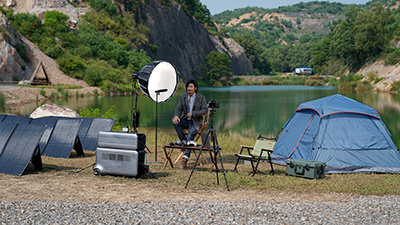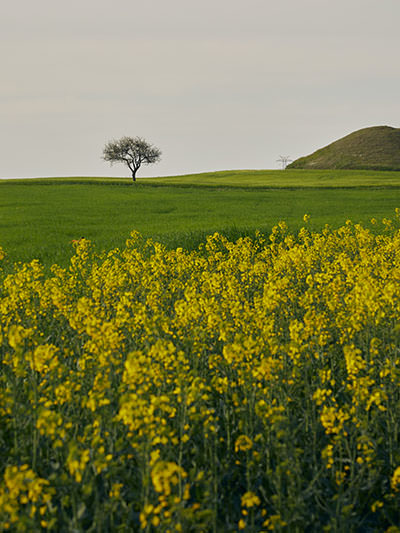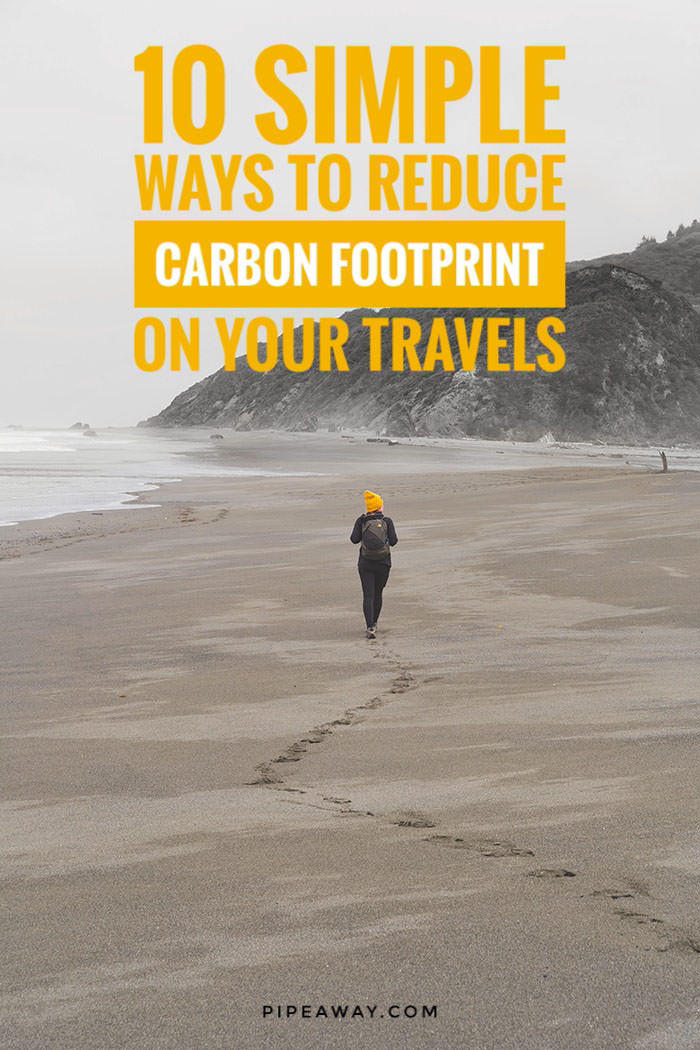Most of us love to travel the world. But there’s a problem: our traveling directly affects the world we are traveling through. And not in a good way. Our actions generate greenhouse gases that contribute to climate change. That’s an issue we shouldn’t think about only on Earth Day. Okay, when we finally decide to afford that dream trip, the impact of our choices can slip our minds. But for the sake of future trips, and life on the planet in general, we should look for ways to reduce carbon footprint whenever we are traveling.
Carbon footprint happens when we are aware of it, and when we are clueless
A Chinese couple that recently visited South Korea did completely the opposite. They booked a villa in Seoul through Airbnb, but then changed their mind because they preferred another location. The flat host didn’t approve the cancelation, so they took revenge by leaving the water tap running, and keeping lights and gas on. They ended up wasting 120 tons of water and left the owner a gas bill amounting to 730 US dollars.
There are many ways these tourists could have expressed their dissatisfaction with the flat owner’s policies, but they chose the utterly senseless one. Sure, it hit the renter’s pockets, but stealing or giving away a piece of furniture would too. Nature, whose resources they mindlessly spent for nothing, was just a collateral victim in this childish revenge game.
It could be that the couple didn’t think much about the impact of their actions. But maybe that’s a weakness we are all prone to. We don’t necessarily raise CO2 emissions because we are inherently mean. We are capable of doing such things when we get careless.
Luckily, for that problem, there is a cure, and it’s called care. We can make choices. We can improve awareness of the fact that traveling is not just a way to explore new places and cultures and have the world at our service. Traveling makes a significant impact on the environment, our wanderlust comes at a cost. It happens when we are aware of it, and when we are clueless.
In today’s article, we’ll talk more about the human carbon footprint, ways to reduce it, and actionable tips and tricks that will help you join the green travel movement.
Carbon footprint definition
If your head was in the clouds for the past decades, let’s start by defining what carbon footprint means.
Carbon footprint is a term used to describe the amount of greenhouse gases (mainly carbon dioxide, but also methane, nitrous oxide, and fluorinated gases) released into the atmosphere as a result of our actions.
Everything we do, from driving a car to chowing down on a juicy burger, has a carbon footprint because it requires energy and resources that ultimately contribute to the release of greenhouse gases into the air.
These emissions are important because those gases trap the Sun’s and Earth’s heat, warm the world, and directly affect climate change. The effects threaten life as we know it, so we can expect to witness even more frequent extreme weather, rising sea levels, food shortages, and extinction of species.
Learn what's happening with the last remaining northern white rhinos in the world in an interview with Matjaž Krivic!
Carbon footprint reduction
Globetrotting generates a hefty carbon footprint, but reducing it doesn’t have to feel like a buzzkill. On the contrary, taking a path of responsible travel can add a sense of purpose and meaning to our enjoyment.
Let’s dive into some simple and effective ways to reduce your carbon footprint that will not rob you of your wanderlust cravings!
Sustainable travel is the top trend of 2023 travel predictions, and the key aspect of the aviation industry development, but also something you should adopt anyway. It starts with these easy tips and tricks to making your next trip Earth-friendly.
Some political readers did not understand the point of sustainable travel, so they went to Dubai's COP28 climate summit by the most polluting mode of transport - private jets.
10 best ways to reduce carbon footprint while traveling
1. Use eco-friendly transportation.
Transportation is one of the key contributors to carbon emissions when traveling. Besides cars, planes are the biggest offenders; just one transatlantic flight releases 1,6 tons of CO2! Even Bigfoot would be envious of the carbon footprint of flying.

Flights are sometimes the only practical option to reach a certain destination. If that’s the case, consider choosing airlines that have a clear commitment to sustainable operations and even their own carbon offset programs (a hidden fee that is actually doing some good).
If possible, fly newer planes that are usually more fuel-efficient. Single-aisle aircraft is your best pick.
Connecting flights may sometimes be cheaper than direct ones, but if you can swing it, try to avoid layovers.
If you can organize your life in a way that you can take fewer longer trips, that’s always better than many shorter ones. Personally, I prefer traveling for up to half a year at a time. This may require one intercontinental flight, but once you’re in Thailand for instance, Cambodia or Laos is just a bus ride away. Flying from and back to your original country for every destination is the least green way of exploring the world. Combining more destinations in one trip is beneficial both for your wallet and for your transportation carbon emissions.
Of course, the best way to reduce your carbon footprint when traveling is by taking the slower option: ground transport. Trains are the number one eco-friendly choice, but hopping on a public bus is also better than traveling alone in a car. If you do need to rent a vehicle, go for the smallest one in the petrol-powered fleet, or better yet, an electric car.
Once at a destination, swapping taxi rides with cycling tours or walking routes will be as rewarding for the environment as for your nice-looking calf muscles.
A British family decided to travel to Australia overland. Learn about the benefits of slow travel!
2. Pack light.
Do you struggle before every trip with the age-old question “What do I pack?”? If you want to travel sustainably, the answer is quite simple.
Packing light is one of the easiest ways to reduce carbon footprint. Those extra kilos in your luggage may seem harmless, but they require additional fuel to transport them.
That’s true not only for planes but also for other types of transportation. For instance, while filling the car’s gas tank to the brim might be convenient, the fuel disappears quicker, simply because its weight also contributes to the total weight it needs to move around.

Packing light will reduce the contribution to the weight of the vehicle and thus affect fuel consumption.
We are all inclined to overpacking, so consider minimizing your packing list to essentials. Sticking to the basics also means that you don’t need to bring things you can easily purchase at your final destination.
Consider investing in lightweight suitcases of adequate size for your specific needs. The more compact your luggage gets, the better its environmental footprint.
When you count into the equation that you are also saving worries and money on fees for exceeded baggage weight, traveling light is indeed traveling right.
Also, your spine will thank you.
3. Choose eco-friendly accommodation.
Being conscious when choosing your accommodation can be your little contribution to a more sustainable hospitality business. Support hotels and resorts that go above and beyond in minimizing their impact on the environment, by using renewable energy sources and implementing recycling programs.

Eco-friendly accommodations are not just champions of responsibility in tourism, but also often elevate the game in hospitality altogether. Some of the best hotels I stayed at (like Jaya House River Park and Limalimo Lodge) were actually those that were fiercely supporting both their natural and social surroundings.
When leaving reviews for your accommodation, applaud the good environmental practices, and politely suggest where they can improve. By showing that customers do care about sustainability, you could inspire properties to strive to design an even greener future.
If you stay at a place that is far from that brighter future, you can still do your part by conserving resources. Let the Chinese couple from the beginning of this story be anything but inspiration: take shorter showers, skip the jacuzzi bath, cut down on heating and AC usage, and turn off those Betlehem-style Christmas lights.
4. Choose environmentally sustainable activities.
Activities we partake in on our trips also impact the environment. While some are normally harmless (think hiking, biking, snorkeling, visiting local farms, etc.), the impact of others is quite negative (e.g. jet ski joyrides, motorized boating, tiger petting, swimming with captive dolphins, and elephant rides).

Avoid activities that involve exploiting animals, revving up a motorized vehicle, or harming the ecosystem in any other way.
Always check that your tour operator follows sustainable practices. Don’t be afraid to ask questions about their commitment to reducing the impact on the environment.
Pro- tip: try to choose activities that are within walking distance of your accommodation. Or even better, choose the accommodation that is within walking distance of activities.
5. Support local businesses instead of large corporations.
Spending money at a local business directly supports the local economy and people who live and work at your destination. This can in turn help preserve the unique character of the place you’re visiting, with its authentic culture and heritage.

Also, smaller businesses usually have a gentler carbon footprint than large international corporations. They typically find their resources locally, minimizing the carbon-emitting transports large corporations with global supply chains are known for.
While big boys often prioritize profit over responsibility towards the environment and community, small guys (businesses that are rooted locally) have more interest in investing in renewable energy, reducing waste, and other sustainable practices.
Next time you feel the craving for Starbucks, booking a tour with an operator that’s owned by global investors, or buying that cheap souvenir produced in China (while you are miles away from the country), think about alternatives that replace flashy ads with positive impact.
6. Eat sustainably.
Eating local food is an extension of the previous tip. Besides supporting local farmers and businesses, it also means looking for those restaurants and markets that prioritize locally sourced, seasonal, and organic ingredients. This will avoid carbon emissions associated with shipping food across the globe.

Growing crops for livestock also requires a lot of resources and energy, which makes meat and dairy production a major contributor to carbon emissions. To reduce carbon footprint, consider cutting back on your meat intake, especially when it comes to beef, which is the top offender.
Ideally, try to completely embrace a vegetarian or even vegan diet. You’ll be helping the environment, but you might also discover delicious plant-based dishes you never knew existed.
7. Reduce the use of plastic.
The easy and effective way to reduce your carbon footprint is by eliminating single-use plastics from your life. Plastic pollution is a real thing, and the least you can do is ask the cocktail master to not put two plastic straws in your Mojito. You’re not doing an arts-and-crafts project after all!

If you don’t have it already, you should invest in a durable and reusable water bottle. Some of Amazon‘s bestsellers are the insulated premium stainless steel Iron Flask (with more than 120 thousand positive reviews), Hydro Flask with mouth straw lid, and this practical collapsible silicone Special Made water bottle that will not take much space once you’re done drinking. With free water-refill stations popping up at hotels, airports, and even shops, buying bottled water truly looks like an outdated, pricy, and senseless habit.
Of course, you can extend your eco-friendly travel kit with other goodies that will help you avoid using single-use plastic products. Those could include reusable cotton tote bags (coming in a variety of colors and quantities, so you can decorate them according to your style), refillable coffee mugs, reusable stainless steel straws with cleaning brushes, biodegradable bamboo toothbrushes, or refillable containers for toiletries, so you don’t have to constantly buy travel-sized products.
8. Go digital.
If you’re one of those people that travel around with hundreds of printed-out Tripadvisor recommendations, stop doing that! Today, when our phones are little computers, and information is just a click away, it doesn’t make sense to cut down trees just so you could organize yourself better.

Instead of ancient paperback and hardcover travel guides (with probably outdated information), discover the universe of Kindle guides. Or read blogs, such as this one, and then bookmark them, pin them, or save them for future reference in any way that suits you.
As for the maps, digital maps have numerous advantages over bulky old-fashioned paper maps that scream “tourist in town!” while you desperately try to fold them back again. Just follow the interactive map on your phone; it will give you clear directions, updated in real-time, and besides traffic situation, fill you up on details about attractions’ operating times, and show you pictures and reviews.
Embracing the digital age in the 21st century is not only convenient. It is also, not the least important, an eco-friendly way of exploring the world.
Shop here for your Climate Pledge Friendly devices!
9. Use solar charging.
To be fully independent and also to be certain that you’re minimizing your carbon footprint, invest in a solar-powered charger. You’ll be able to count on using your phone, tablet, and other devices, even when there is no electric socket in sight.

It’s a true saver on hiking adventures and camping trips, but you can use such a charger whenever you want. No more fighting over the one outlet in the hostel common room with that guy who’s been hogging it for hours!
A recommendable option is this Lincorne solar charger power bank that has an impressive 30000mAh storage and doubles as a flashlight at nighttime tracks, with lighting time lasting up to 50 hours. There is also a compass included in this waterproof and shockproof charger, so no more getting lost either! But as you already use digital maps, I’m sure that won’t happen anyway.
With this handy gadget, you’ll never run out of juice on your adventures (don’t you hate it when your phone battery gets drained just when you wanted to shoot an epic pic?), and you’ll be doing your part to save the planet. Say goodbye to dead batteries and hello to unlimited power!
10. Offset carbon footprint.
You can counteract the carbon emissions you produce while traveling through an easy and cost-effective method: planting trees.

Trees have these superhero powers that make them nature’s air purifiers. They absorb carbon dioxide through photosynthesis and store carbon away in their trunks, branches, and leaves. Arbor Day Foundation estimates that a mature tree absorbs up to 22 kilos of carbon dioxide per year.
There is nothing wrong with planting a tree in your backyard or your neighborhood. You can reduce your carbon footprint and the feeling of guilt with this simple action.
If you don’t want to get your hands dirty, you can donate money to organizations that will plant trees for you. The reforestation projects are led by already mentioned ADF, but also non-profits such as One Tree Planted, Trees for the Future, and Carbonfund.
Annulling the effects of a short flight costs 25 dollars, the yearly offset of compact car effects – 50 dollars, and if you just want to erase your individual contribution to greenhouse gases, you can do it with already 300 dollars.
Planting one tree costs 1 dollar, so combating climate change through offsetting a carbon footprint is truly available to everyone. Start planting your forest today!
Reducing carbon footprint when traveling – Conclusion
Traveling, especially traveling internationally, allows us to enjoy discovering new cultures, landscapes, and cuisines. But this private leisure is also a common burden, adorned with a feeling of guilt.
We are not disconnected from the world we love to explore. We are not just passive observers. Every time we travel, we become active participants in the process of global warming, the enemy of that same world.
Political leaders of the world could do so much more, but while they slowly wake up from decades of hibernation, every little step towards reducing carbon footprint counts
Luckily, from packing our bags to choosing our activities and places we stay at, there are ways to make our journey more sustainable and offset the damage we cause. I hope this article informed you how to reduce carbon footprint while traveling, or at least gave you a basic push towards a higher awareness of the significance of our actions.
Our contribution to carbon emissions doesn’t mean we have to sail oceans like Greta Thunberg. But it does mean that we should consider the invisible trail of our every flight, and try to offset our personal carbon footprint the best that we can.
Incorporating at least some of these simple tips in our travel routine can make a difference, one that is calculated as positive. World leaders could do so much more, but while they slowly wake up from decades of hibernation, every little step counts. Like, fitting a carry-on in the overhead bin instead of checking it in, or walking instead of hopping in a cab.
Traveling is one of the most exciting activities, but even more when it’s meaningful. The thing is: carbon footprint is not just an ugly travel souvenir we can hide on some less-visible shelf. It’s a haunting shadow that doesn’t go away, and it’s not called a footprint without a reason. It matches our foot just like Cindarella‘s shoe. There’s no running away.
Did you like these easy ways to reduce carbon footprint?
What will you incorporate into your daily routine?
Pin this article for later!

Disclosure: This post may contain affiliate links, meaning if you click on them and make a purchase, Pipeaway may make a small commission, at no additional cost to you. Thank you for supporting our work! The photographs in this article, except for the one of Jaya House River Park (author Ivan Kralj), and foldable water bottle (Amazon), have been sourced through Unsplash. In the order of appearance, the authors are as follows: Footprint (cover image) - Evie S. Qutub Minar - Akshay Srivastava Packing - Paige Cody Hiking - Devon Hawkins Strawberries - Samantha Fortney Pizza - LUM3N Map - Burçin Ergünt Solar charging - Zendure Power Station Tree - meriç tuna Beach (pin image) - Y S



I’ve long been committed to the Slow Travel concept. By this, i mean, travel less often, but stay longer. Many years ago, when I was planning a trip to Sweden, everyone kept asking me, “While you’re in Europe, what other countries are you going to visit?” It was like, “How many visas are going to be stamped in your passport?”
Since I was going to go for four weeks, I thought of spending one week in each of the Scandinavian countries. Perfect. But then I thought it takes a day to travel. So that subtracts four days from my trip. In the end, I rented a small flat in Stockhom for four weeks, which offered a 20% discount. I only made one three night side trip to another part of the country. I just left my stuff in the flat … it was too much trouble to pack for three nights. I just took an overnight bag.
As it turned out, I didn’t have enough time to fully explore Stockholm. I quickly found a cafe to hang out at, getting to know the regulars. Alas, it only yielded one stamp in my passport. But for me, it was a much more enriching experience. And there was a much smaller carbon footprint.
Michael, your commitment to slow travel is truly commendable!
I like the approach of staying longer in one place myself too. Rather than just hopping from country to country, this choice allows a deeper immersion in the local culture but also significantly reduces one’s carbon footprint.
Thanks for sharing your story! It’s inspiring to see how slowing down and savoring each moment can lead to more enriching travel experiences while also being mindful of the environment.
Great tips! I enjoy eating locally, and also eating at local places who source their food locally.
It’s fantastic to hear that you’re passionate about supporting local food, Sonia!
Your choices allow you to experience the authentic flavors of a region AND help reduce the carbon footprint associated with transportation. So it’s a win-win!
Keep up the great work, and bon appétit! 🍽️🌱
While I still can’t resist buying that cheap magnet souvenir, I also try to purchase it from a local vendor. Does that count, a little?
Hehe, I think it does, Michelle.
It’s always great if you can support a local vendor instead of some flashy duty free shop at the airport.
Of course, I’d suggest you try to check the country of the origin when purchasing such souvenirs, if you can.
For instance, it’s kind of senseless buying a magnet representing Angkor Wat, the greatest Cambodian monument, only to find the label “made in Thailand”.
In poorer societies especially, it’s very important to look where our tourist money is ending up, as we might unknowingly support chains of exploitation that seemingly benefit locals, but in fact they collect money for some much greater pockets.
However, already being aware is a great start in making fewer “mistakes”. Keep up your willingness to make conscious choices when traveling!
Love these tips! I can’t believe that couple did that (first of all). Second, I didn’t even THINK about that with the gas tank. Rethinking my game there, thank you! A lot of these I already do (eating locally, choosing companies who contribute to offsetting carbon footprinting, went digital, etc). My latest one is tremendously cutting back on how much I pack. Not just for this reason but because it’s overall easier too!
Heather, it’s great to hear that you found the tips helpful!
Isn’t it surprising how little actions can make such a big difference?
It sounds like you’re already on the right track with many sustainable practices. And kudos to you for cutting back on how much you pack!
I think this always comes with experience. I’m afraid to even say what I packed for my first 6-month trip. There were quite a few completely unnecessary things in my suitcase. But we learn by doing, even if sometimes it means – by doing mistakes. It’s important we try to correct them as much as we can.
Keep up the awesome work, and thanks for being so mindful of your impact on the planet!
great motivation to pack lighter! I’d never added that one into my arsenal of green travel thinking. Like it!
Hey, Liz!
I’m glad you found the tip about packing lighter to be motivating!
Not only does packing lighter reduce the carbon emissions associated with transporting your luggage, but it also makes your travels more convenient and hassle-free.
Here’s to lighter bags and greener adventures!